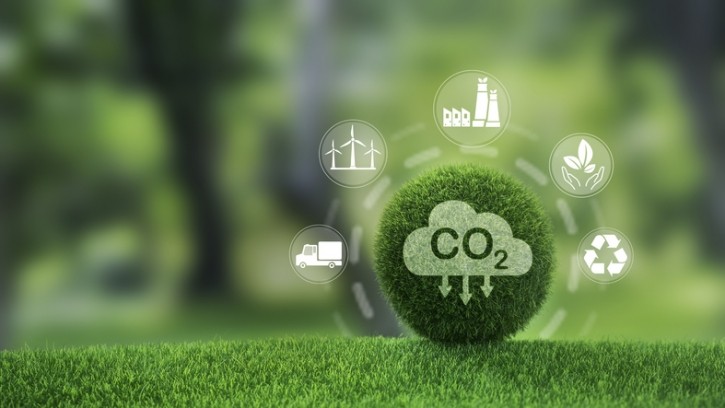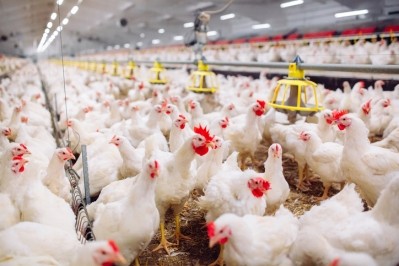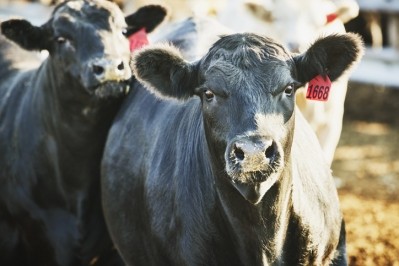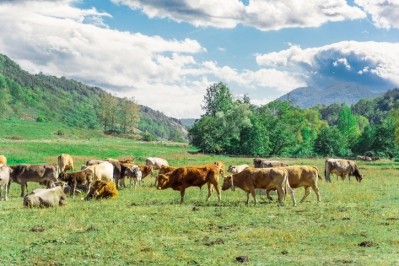Groundbreaking study reveals vaccinating livestock as one strategy to mitigate disease linked GHG emissions

Preventable livestock disease outbreaks such as the recent bird flu epidemic in Europe and North America are generating millions of tons of avoidable greenhouse gas (GHG) emissions, finds the study.
The research, published in One Health Outlook, analyzed emissions caused by some of the most damaging, but preventable, livestock diseases around the world, including foot and mouth disease and porcine reproductive and respiratory syndrome (PRRS).
COP28 saw the FAO release a new report that emphasizes the urgent need to reduce GHG emissions from global livestock systems due to the increasing demand for terrestrial animal products and a growing world population.
The report suggests multiple mitigation options that address both the supply and demand aspects of livestock sectors. These pathways include improving animal health, adopting better breeding practices, reducing food loss and waste, and directly targeting such emissions.
The findings, subjected to peer review, reveal that livestock systems accounted for about 12% of all anthropogenic GHG emissions in 2015. Without interventions and productivity gains, global livestock emissions are projected to reach nearly 9.1 gigatonnes of CO2 equivalent by 2050.
The study looked at the effects of the most important global livestock diseases that are zoonotic – those that can cross from animals to humans and vice versa - and that could be prevented by vaccines, on the productivity of livestock in a variety of systems - intensive dairy, extensive beef, commercial swine, and backyard poultry - across the globe, said Professor Jude Capper, an independent livestock sustainability consultant and author of the study.
Model approach
“Using livestock health and performance data from publicly available databases and peer-reviewed papers, models were developed to assess the impacts of disease at high or low levels on livestock production. The impacts of disease on GHG emissions were then calculated based on the changes in milk or meat yields and numbers of livestock required to maintain production. As disease severity increased from mild sub-clinical diseases to those that increase mortality or impact reproduction, more animals were required to maintain production and so both resource use and GHG emissions increased compared to a baseline population,” she told FeedNavigator.
According to the study, every 100,000 sows spared from PRRS prevents more than 420,000 tons of CO2e emissions, meaning that limiting the spread of PRRS in the most vulnerable pig populations would reduce emissions per unit of pork by 22.5%. Meanwhile, controlling high pathogenicity avian influenza (HPAI) in high prevalence areas would reduce emissions by almost 16%.
Professor Capper, who is also the ABP chair of sustainable beef and sheep production at Harper Adams University and holds a PhD in ruminant nutrition and behaviour, added: “Increasing livestock vaccination will be instrumental in meeting the dual challenge of halving global GHG emissions by 2030, while feeding nearly nine billion people.”
Developing markets
Livestock disease has a particularly high environmental burden in low-income countries, where a lack of access to veterinary services limits the ability to control or treat the animals, said the expert.
More than 80% of farms in low-income countries are smallholder or backyard operations, often characterized by greater GHG emissions per unit of meat, milk, or eggs often because of resource, infrastructure, economic and political limitations.
Controlling lumpy skin disease, which is endemic in most African countries, in just one 200-cow beef herd saves 114 tons of CO2e emissions. For countries like Ethiopia, which has the largest livestock population in Africa at 65 million cattle and where livestock infections cause losses of up to 50%, preventing animal disease would dramatically reduce emissions associated with agriculture.
Vaccination constraints
Asked what factors are holding back more widespread vaccination of livestock globally, she said:
“Although vaccines are available for all the diseases investigated in the paper, they are not available or adopted within every region or system worldwide, due to a range of economic, political, infrastructure or veterinary constraints. For example, in low-income countries, the veterinary infrastructure, including the cold chain, may not supply livestock keepers in remote, rural areas. For some diseases, such as avian influenza, vaccination is also discouraged because of the complications it has for trade, given that vaccine-based immunity can be mistaken for infection.
“The adoption and effectiveness of vaccines will never reach 100% across a real-life livestock population. This is why other disease control measures and best practices in animal health, including biosecurity measures, are also important.”
Feed efficiency
Nutrition is an integral part of excellent animal health – livestock fed a nutritionally inadequate diet, or suffering from a disease that impacts feed efficiency cannot perform as well as a healthy or well-fed animal, she said. “For example, Johnes disease, which impacts feed efficiency, is associated with 25% higher emissions per kg of milk, and 40% higher emissions per kg of beef.”
Livestock producers worldwide, she continued, must improve health and welfare through improved disease surveillance and reporting, optimized medicines use, preventative herd or flock health plans and adoption of tools and technologies that facilitate these goals. “This requires a concerted effort to improve collaboration and communication between all livestock production stakeholders, from the producer, veterinary surgeon, and nutritionist through to the processor, retailer, and policymaker.”
Further research
Building on the modelling done in this study with further on-the-ground research could provide valuable lessons as climate strategies evolve in the years ahead, she maintains.
“The results of the current study add to the body of knowledge and information that may be used in the drive to increase vaccine use for livestock. However, more research is urgently needed to fill the current knowledge gap relating to the impact of other livestock diseases and their prevention or control on environmental responsibility, as well as the three pillars of sustainability combined – environmental, economic, and social.
“The recent World Animal Health Information System (WAHIS), produced by the World Organisation for Animal Health (WOAH), was developed with the aim of facilitating disease reporting, increasing, and easing data reporting and therefore improving global data quality. If successful, this may help to bridge the data gap relating to livestock disease, milk, and meat production and GHG emissions.”











